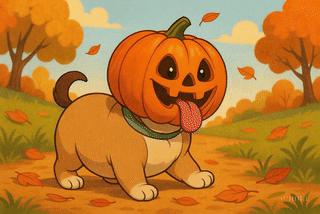
The quintessential Autumn squash, pumpkin, has appeared in pet food for years for decades. In a 2017 analysis by Petfood Industry, pumpkin appeared in nearly 20% of dry dog food recipes. For dry cat food, slightly more than 15% of recipes featured pumpkin.
“Nature’s Recipe uses pumpkin for its unique fiber composition to help support digestive health in dogs,” Preston Buff, pet nutrition expert at Post Consumer Brands, told Petfood Industry. “At Post Consumer Brands we use a proprietary formulation software that aids us in calculating the quantities of ingredients needed to balance each diet. We choose every ingredient for a reason—to help give your pet the nutrition they need.” Tim Wall | Sora
Tim Wall | Sora
While popular, there’s little publicly available peer-reviewed research on how pumpkin affects dogs and cats. However, there’s also no evidence that pumpkins can cause problems in pets.
Pumpkin may serve as a functional, alternative ingredient in pet food, not as a total replacement for functional starches, but as a source of fiber and potentially other nutritional benefits, Greg Aldrich, PhD, wrote in Petfood Industry a decade ago.
“No evidence of toxicity or unintended consequences from feeding pumpkin to pets can be readily found in the literature,” Aldrich wrote. “Generally, it is assumed to be well liked by dogs, but cats are indifferent to pumpkin as a single food item.”
Pumpkins as pet food ingredients
The crop called pumpkin is actually several species in the genus Cucurbita. Regardless of species, the USDA Nutrient Database for Standard Reference states that 100 grams of pumpkin contains 555 kcals of energy, 29.9 grams of protein, 40 grams of fat, 18.7 grams of carbohydrates and 5.1 grams of fiber. Pumpkin also contains calcium, iron, magnesium, zinc and other nutrients.
“All squash are a good source of dietary fiber as well as certain vitamins and minerals, including Vitamins A and C to support the immune system,” Buff said.
Indigenous people of what is now North America domesticated pumpkins thousands of years ago, while other species of squash were domesticated in South America. By the onset of European colonization, pumpkins were grown throughout the Western Hemisphere. Like turkey and corn, pumpkins are another human and pet food ingredient with ancient roots in Indigenous culture.

















